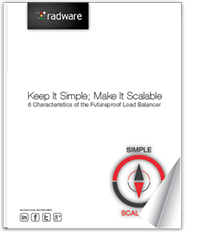Using SLA Management to Save Time and Improve
Today more than ever, the success or failure of our digital enterprise rests on whether our customer has a good user experience. No one wants to use something that is difficult to use or unreliable, and most of us don’t want to use something unless the user experience is consistent. All too often, organizations expend all their energy into making their tool /application look good, be easy to use or making it have great functionality. What they forget is that performance, especially consistent performance, can be just as important. All these things rolled into one are what I call the convenience factors. It’s not a new concept and many brick-and-mortar companies have failed over the years because of this. If we go back a few years, we can see many examples of technology or companies succumbing from an original position of strength because they never took this perceived convenience/quality factor into account. Three examples:

- GMC and Ford went from undisputed market share leaders of the 1970’s, with the gold star for product performance, to being considered completely unreliable and losing considerable market share to both Japanese and to a lesser extent European competitors. This drop in performance and decline in consistent reliability ultimately lead to GMC filling bankruptcy and Ford almost doing the same.
- Blockbuster had conquered the world with stores in every suburb of most cities. They had essentially put all of their major competitors out of business. Along came Netflix, who changed the meaning of the word convenient to mean online downloads.
- Eastern Airlines went under for many reasons, but the biggest was a multi-year series of strikes that affected “product quality.”
How much more so are these combination of factors when the entire ability to build loyalty and relationships depends on one vector your website/application performance? In this new digital paradigm where choice is simply a click away, the convenience factors become even more critical. We have to be “easier to deal with” or our customers can, without any effort, go somewhere else.
To this end, companies have been increasingly using performance baselining and monitoring tools. There are many options in this space and the pricing varies significantly with the functionality. In our opinion, there are two routes for a company to go. Get a full application performance monitoring solution that really becomes part of the QA toolset and more importantly, get an SLA manager software.
The SLA manager software should be a key component in any client-facing application today. It should be flexible enough to take to either take manually-uploaded, expected performance metrics and monitoring against them, or to be able to do baselining exercises to see what the standard performance is and then monitor against that standard. The alerting system based off of this baselining should be robust and the reporting structure visually appealing and simple to understand. If we implement this solution correctly in theory, we should be able to get ahead of performance problems. With a simple click, we should know if it’s a client-side problem or an application problem. The ideal place to have the monitoring (without having to add agents to the environment or tax application server resources) is on the ADC. Why? Because the ADC is the device in line with the application and oftentimes is actually used to enhance the application performance. Having an SLA manager software reside on the ADC also makes a ton of sense when trying to troubleshoot application performance problems where the application is distributed across multiple servers, because the APM can measure the SAL against each host as well as the broader application as a whole. If you add a strong automation toolset on top of this SLA management capability, you are then able to take proactive steps when you see certain abhorrent behavior like taking a misbehaving server out of the pool or adding a server on the fly – not because resources look constrained, but because the application performance is not what it should be.
The best part about using an SLA manager software that is native to the ADC is that it is easy to set up (no agents) and comparatively very inexpensive. In the past these tools were mostly used by the networking or security admins to be very reactive when troubleshooting because it allowed them to fix the problems quickly and accurately. I might add that the problem does not lie here. But in the new world where convenience is the new paradigm, an SLA manager software with APM functionality is almost a requirement. Why not take advantage on the integrated APM available from companies like Radware? Go from being reactive to proactive and allow yourself to deliver consistent expected performance by being able to know there is a problem before your customers, and address it accordingly.




